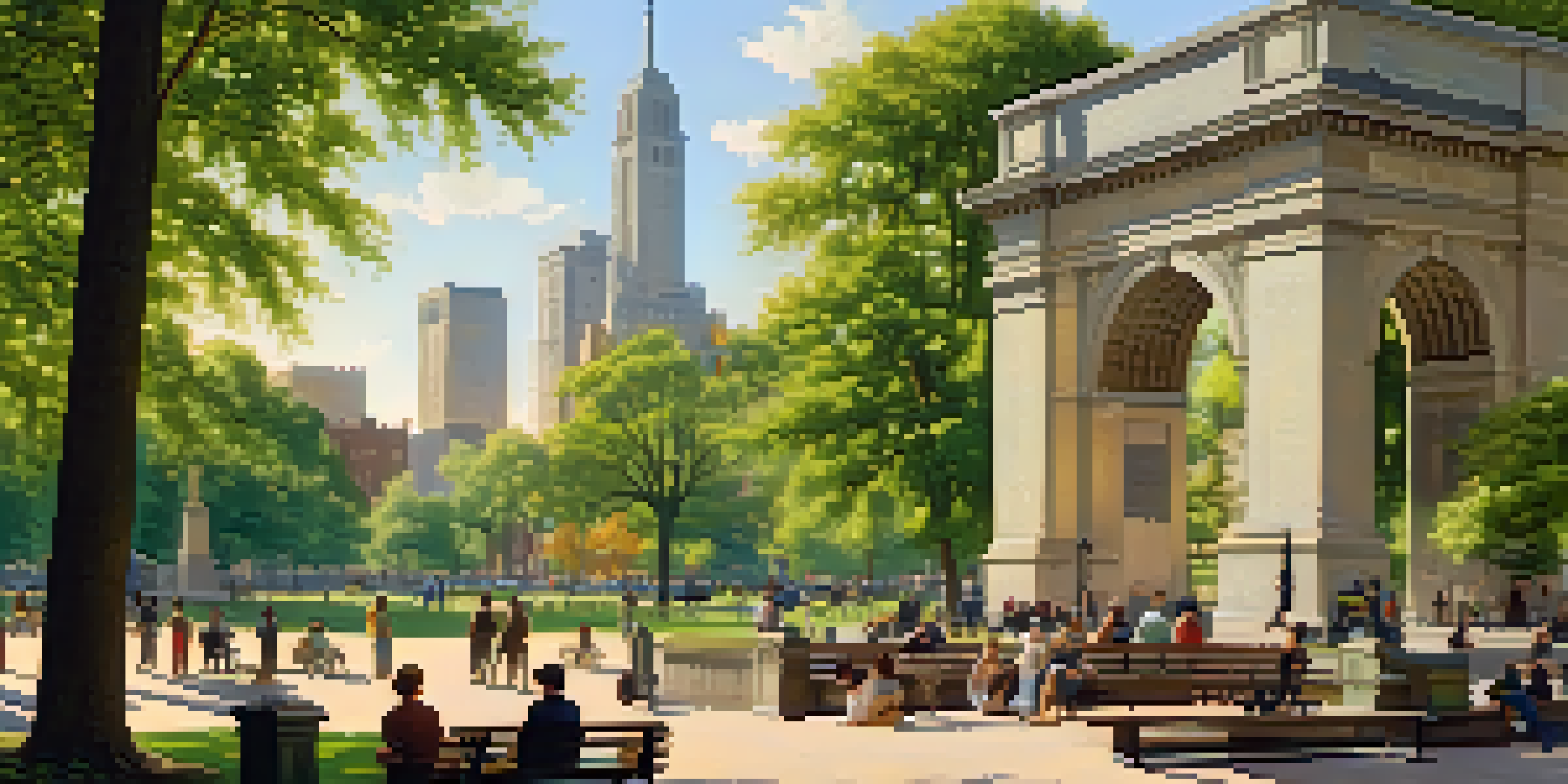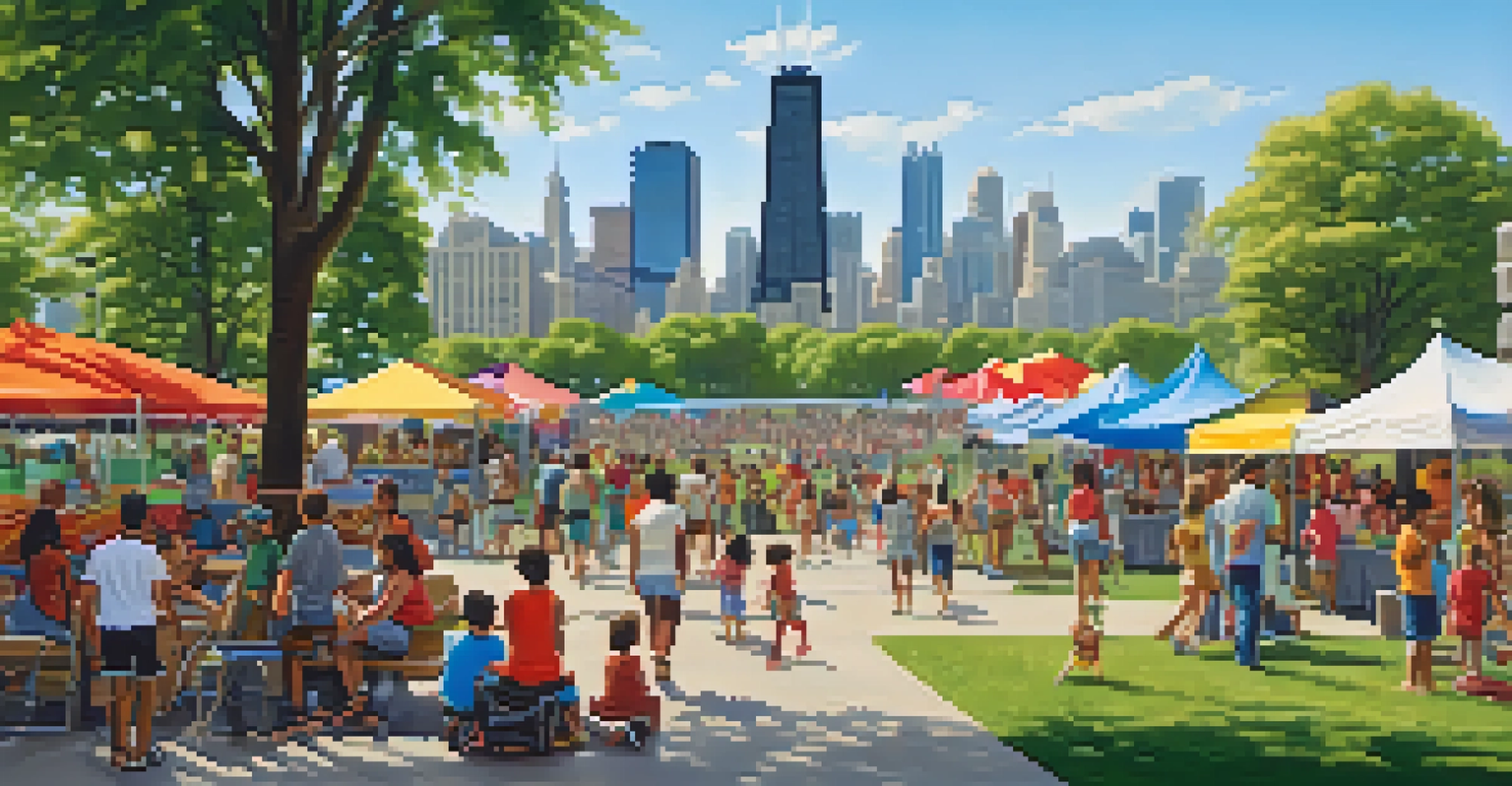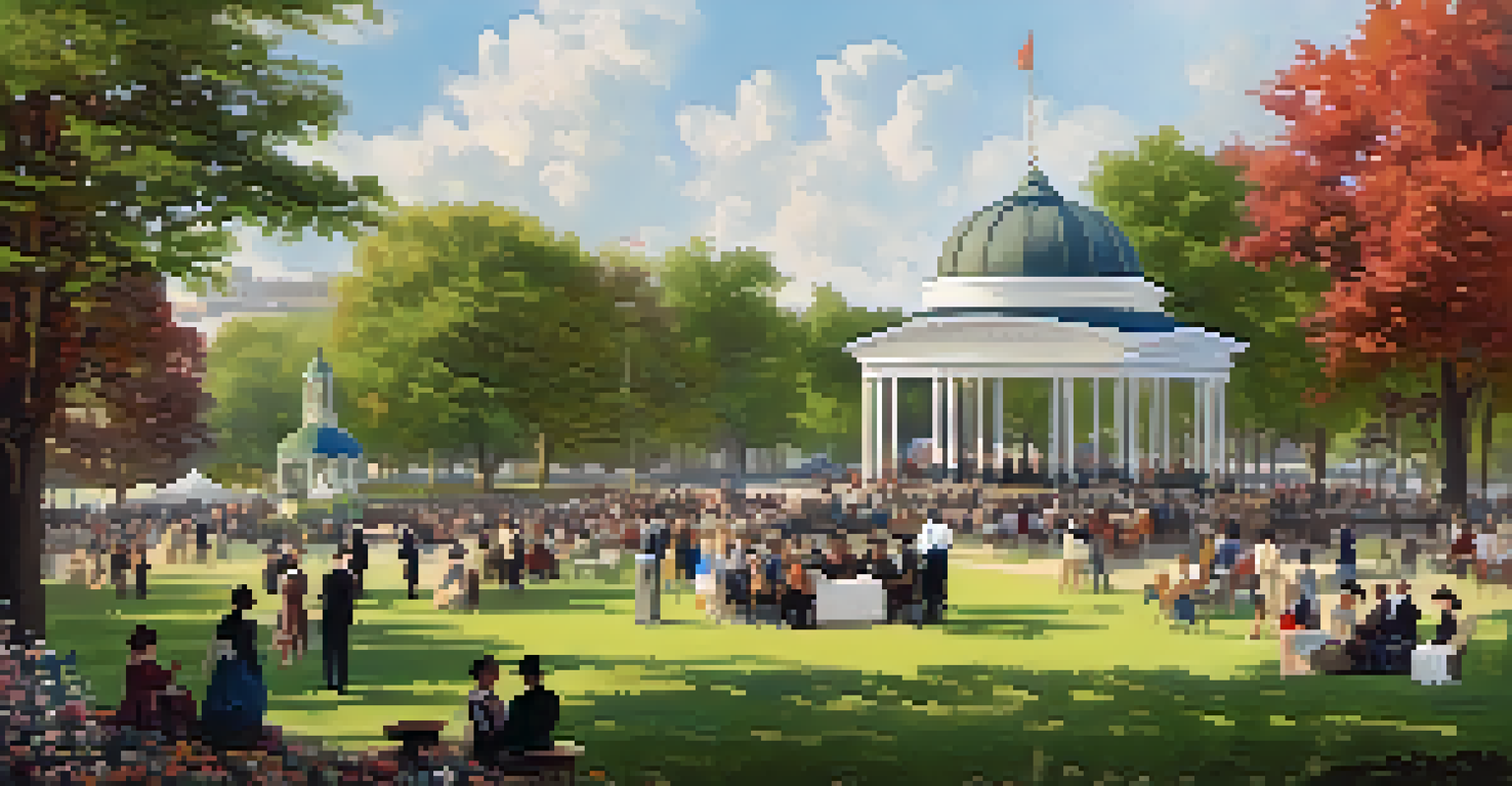The History and Evolution of Chicago's Parks and Recreation

The Origins of Chicago's Green Spaces: Early Beginnings
Chicago's journey into creating green spaces began in the early 19th century. The city's founders recognized the importance of parks for public health and community well-being. In 1837, Chicago was formally incorporated, and with it came the vision of a city adorned with natural beauty.
Parks are essential to our public health, our economy, and our quality of life.
The first significant park, Washington Square Park, was established in 1842, providing a green refuge for the growing population. This was a time when the city was rapidly expanding, and the need for recreational areas became increasingly evident. These early parks were simple in design but laid the groundwork for future developments.
As the population swelled, the demand for more parks grew. The idea of creating a park system that could serve all citizens became a pivotal part of city planning, marking the start of a long-standing commitment to public recreation.
The Mid-19th Century: The Rise of the Park Movement
By the mid-1800s, a movement began to take root that advocated for more structured park systems. Influenced by European designs, urban planners and landscape architects pushed for parks that not only offered beauty but also served the needs of the community. The Chicago Park Act of 1851 established the Chicago Park District, formalizing the management of public parks.

Notable figures like Frederick Law Olmsted, known for designing Central Park in New York, brought their expertise to Chicago. His vision resulted in an interconnected system of parks that included scenic drives and landscapes, making nature accessible to urban dwellers. This era showcased the importance of green spaces in improving urban life.
Chicago's Green Spaces Evolved
From the early 19th century, Chicago's commitment to parks grew, enhancing public health and community well-being.
The park movement also emphasized inclusivity, encouraging public engagement in park design and usage. As a result, parks became places for social gatherings, cultural events, and recreational activities, strengthening community bonds.
The Expansion Era: Late 19th to Early 20th Century
The late 19th and early 20th centuries saw unprecedented growth in Chicago's park system. The 1893 World's Columbian Exposition served as a catalyst for urban beautification, leading to the creation of several new parks and the enhancement of existing ones. During this time, the city invested heavily in recreational facilities.
The greatness of a community is most accurately measured by the compassionate actions of its members.
Parks like Grant Park and Lincoln Park were developed, serving as cultural and leisure hubs. These parks were designed to host events and activities, reflecting the diverse needs of the city's residents. The introduction of playgrounds, sports fields, and community centers further diversified recreational options.
This era also marked the beginning of organized recreation programs, providing structured activities for children and adults alike. It was a transformative period that recognized parks as essential for promoting physical health and community spirit.
The Great Depression and Its Impact on Parks
The Great Depression of the 1930s posed significant challenges to Chicago's parks and recreation. Funding shortages led to a decline in maintenance and development. However, the era also brought opportunities for revitalization through federal programs like the Civilian Conservation Corps (CCC).
These programs employed thousands of workers to improve park facilities, build trails, and create new recreational spaces. This not only provided jobs but also fostered a sense of ownership and pride among residents. Parks became vital community resources during tough economic times.
Parks Foster Community Engagement
Today, Chicago's parks serve as vibrant hubs that promote inclusivity and cultural events, bringing diverse communities together.
Despite hardships, this period saw a renewed appreciation for public spaces. Many parks were transformed into venues for community gatherings, art displays, and performances, ensuring that even in challenging times, Chicagoans had access to recreation.
Post-War Boom: Parks for a New Generation
The post-World War II era brought a demographic shift, with an influx of families moving to suburban areas. As Chicago's population changed, so did the needs of its park system. The city began to adapt its parks to cater to new recreational trends and growing communities.
In the 1950s and 60s, the focus shifted to developing sports complexes, aquatic centers, and playgrounds, emphasizing family-friendly activities. This was a time when parks became vital for social interaction, youth sports, and outdoor enjoyment. Events like neighborhood festivals began to flourish in these spaces.
This expansion of recreational offerings demonstrated the city's commitment to creating inclusive spaces for everyone. Parks not only served as places for leisure but also as venues for fostering community identity and engagement.
Modernization and the Role of Technology in Parks
As the 21st century approached, Chicago's parks underwent a modernization phase. The introduction of technology played a significant role in enhancing the park experience. Innovations such as digital maps, online reservation systems for facilities, and interactive kiosks became common.
Additionally, the focus shifted towards sustainable practices, with many parks adopting eco-friendly designs. Green roofs, rain gardens, and native plant landscaping became prevalent, reflecting a growing awareness of environmental responsibility. The city aimed to create parks that were not only enjoyable but also sustainable for future generations.
Modern Innovations Enhance Parks
The integration of technology and sustainable practices in parks reflects Chicago's ongoing adaptation to the needs of its residents.
Community input became crucial in the modernization process, with residents participating in planning meetings to voice their needs. This collaborative approach ensured that parks continued to serve as relevant and vibrant spaces in the urban landscape.
Celebrating Diversity: Parks and Community Engagement
Today, Chicago's parks are more than just green spaces; they are vibrant community hubs that celebrate diversity. With numerous cultural events, festivals, and programs tailored to various communities, parks have become places where people from all backgrounds can come together. This inclusivity helps foster a sense of belonging.
The Chicago Park District has made significant strides in promoting access to parks for underserved communities. Initiatives like free fitness classes, summer camps, and cultural festivals ensure that every resident has the opportunity to enjoy and engage with their local parks. This outreach is vital in building lasting connections.

Moreover, parks now serve as platforms for social change, addressing issues such as health disparities and environmental justice. By promoting active lifestyles and community engagement, Chicago's parks continue to evolve as essential components of urban life.